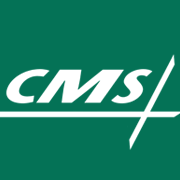CMS Demonstrates How to Track ICD-10 Implementation Progress
CMS has released guidance to healthcare providers to assess, address, and maintain progress with ICD-10 implementation by creating points of comparison from pre- and post- October 1, 2015.

- CMS has recently released an infographic urging healthcare providers to assess and analyze their ICD-10 progress by identifying key performance indicators (KPIs) and creating baselines for analysis for each KPI.

The recent announcement highlights how providers need to assess, address, and maintain progress.
To start, healthcare providers need to assess their progress with ICD-10 implementation. Providers need to identify a long list of key performance indicators (KPIs). Fortunately, most medical centers will have already been tracking a majority of KPIs addressed in the CMS fact sheet.
Some notable KPIs are days to final bill, days to payment, claims acceptance and rejection rates, claims by denial rate, payment amounts, reimbursement rate, coder productivity, and volume of coder questions.
The list of CMS-suggested KPIs aims to address challenges with productivity, reimbursement, and claims submission. The goal of creating baselines for a long list of KPIs is to isolate any issues that healthcare providers have with ICD-10 and quickly address the specific problem.
Once providers identify KPIs, the next step is to create a baseline for each KPI that is relevant to track. CMS encourages healthcare staff to establish a baseline from before October 1, 2015, when ICD-10 was officially implemented.
Providers may have baselines from before ICD-10 from their clearinghouse or they can be created from internal health IT systems, such as the electronic health record.
Clearinghouses, third-party billers, and system vendors are important outside sources with information for establishing baselines.
Healthcare providers can evaluate their ICD-10 progress by comparing pre- and post- October 1, 2015 baselines. CMS encourages providers to compare pre- and post- baselines by month because of seasonal changes in statistics, such as flu season, which may skew results.
These points on comparison help healthcare providers to address specific challenges they have with ICD-10.
To address the results, CMS suggests developing methods for gathering feedback, checking clinical documentation and code selection, verifying all systems are updates, and working with payers to solve billing issues.
Finally, once providers identify and rectify all issues, they can maintain their progress with ICD-10. To accomplish this, CMS states that all coding tool and systems need to be updated on October 1 of every year and all ICD-10 General Coding Guidelines need to be checked regularly.
The ICD-10 Coordination and Maintenance Committee also provides a public forum to discuss changes with clinical issues and procedure or technology. Provider who participate can propose changes to the system and recommend solutions. All final decisions and forum registration is available on the CMS webpage.
The CMS fact sheet addresses overarching concerns about ICD-10 and EHR implementation. Ken Bradberry, Chief Technology Officer for Xerox Commercial Healthcare, even compared the ICD-10 implementation date to Y2K, in an interview with RevCycleIntelligence.com in November 2015.
One major concern with the transition is claim acceptance and rejections rates and reimbursement. RevCycleIntelligence.com reported that an ICD-10 survey from Porter Research and Navicure from February 2016 showed of all the healthcare organizations surveyed, sixty percent saw no impact on their monthly revenue after October 1, 2015.
CMS hopes to assist the healthcare industry in identifying and addresses challenges to a new system early. ICD-10 aims to improve how the physicians notate diseases on health records, track medical trends through the electronic health record, and help payers with medical reimbursements.
To address concerns with reimbursement, healthcare organizations may need to provide more staff education and training on coding procedures and upgrade all health IT systems regularly.
The update on ICD-10 progress from CMS reminds the industry that in a state of transition, there are going to be challenges and reluctance to change, but there are methodical strategies for identifying and resolving specific issues.
